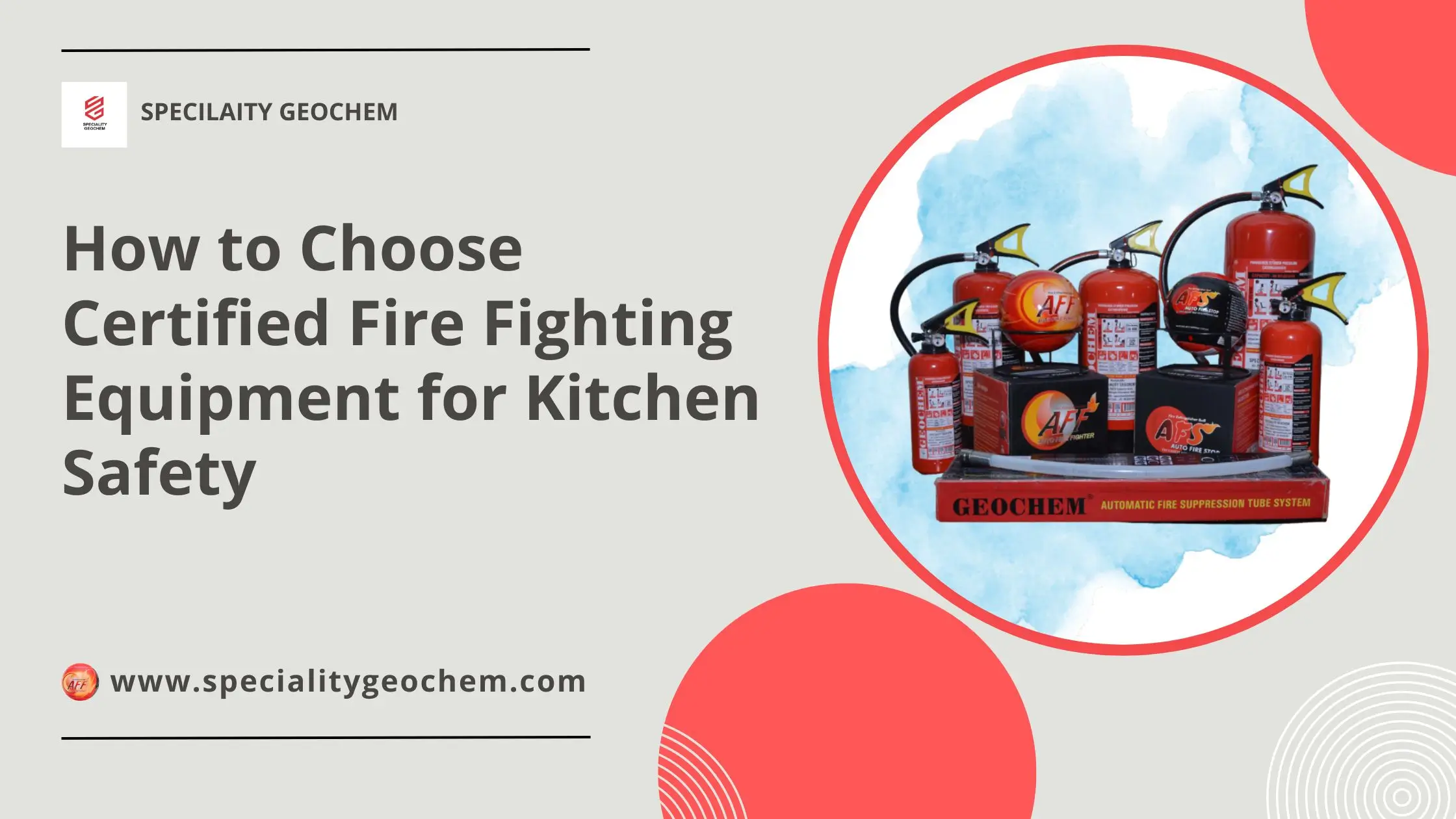Kitchens are the heart of every home, hotel, or restaurant, but they are also one of the most common places where fire hazards occur. Cooking oils, open flames, electrical appliances, and gas cylinders can quickly turn a minor spark into a serious accident. For this reason, having certified Fire Fighting Equipment for Kitchen safety is not just an option—it is a necessity. The right tools can save lives, protect property, and ensure compliance with safety standards.
In this guide, we will explore why certification matters, the types of equipment available, and how you can make the right choice for your home or commercial kitchen.
Why Certification Matters in Kitchen Fire Safety
When it comes to fire safety, not all products are created equal. Certified equipment is tested under rigorous standards to ensure reliability during emergencies. Certification agencies like ISI (India), UL (USA), or CE (Europe) guarantee that the equipment meets international safety protocols.
Choosing uncertified products may seem cost-effective, but they can fail at critical moments, leading to devastating losses. Certified fire fighting equipment ensures:
- Reliability – Equipment functions as intended when exposed to heat and flames.
- Compliance – Meets government and industry regulations, avoiding legal penalties.
- Durability – Designed with quality materials to withstand demanding environments.
- Peace of Mind – Homeowners and business owners know they are protected.
Common Fire Hazards in Kitchens
Understanding the risks is the first step to choosing the right solutions. Some of the most common fire hazards in kitchens include:
- Cooking Oil Fires – Grease fires are difficult to extinguish with water and require special extinguishers.
- Gas Leaks – Leaks from LPG cylinders or pipelines can ignite instantly.
- Electrical Fires – Faulty wiring or overheating appliances are major contributors.
- Cluttered Spaces – Storage of paper, cloth, and plastics near stoves increases risks.
With these dangers in mind, selecting certified Fire Fighting Equipment for Kitchen safety becomes a proactive strategy rather than a reactive one.
Types of Fire Fighting Equipment for Kitchens
1. Fire Extinguishers
The most widely recognized form of fire protection is the extinguisher. For kitchens, Class K extinguishers (in India, often termed Class F) are essential as they are specifically designed for cooking oil and grease fires. Other suitable options include:
- ABC Dry Powder Extinguishers – Effective for multiple fire classes, including solids, liquids, and electrical fires.
- CO₂ Extinguishers – Ideal for electrical fires without leaving residue.
- Wet Chemical Extinguishers – Designed for deep fryer and oil fires.
2. Fire Extinguisher Balls
These innovative devices are compact, lightweight, and activate automatically when they come in contact with flames. They are especially helpful in kitchens where immediate manual action may not be possible.
3. Fire Suppression Systems
Automatic suppression systems detect and release extinguishing agents directly above stoves or fryers. They are commonly installed in commercial kitchens and can prevent small fires from spreading.
4. Smoke Detectors & Alarms
Early detection can make all the difference. Heat and smoke detectors alert occupants before the fire spreads. For kitchens, heat detectors are more reliable than smoke detectors as they avoid false alarms from regular cooking fumes.
5. Fire Blankets
Fire blankets are made from fire-resistant fabric and are perfect for smothering small pan fires or wrapping around a person whose clothes have caught fire.
6. Safety Signage and First Aid Kits
While not directly extinguishing fires, clear safety instructions and immediate medical aid are critical parts of kitchen safety planning.
How to Choose the Right Fire Fighting Equipment
When selecting the right tools, several factors must be considered:
- Certification – Ensure the product is ISI, UL, CE, or NFPA approved.
- Size of the Kitchen – Larger kitchens may require multiple extinguishers or automatic systems.
- Nature of Cooking – Oil-heavy cooking, such as in restaurants, needs wet chemical extinguishers.
- Ease of Use – Equipment should be simple enough for anyone in the household or staff to operate.
- Maintenance Requirements – Choose equipment that comes with manufacturer support for refilling and servicing.
- Placement – Extinguishers should be wall-mounted, visible, and easily accessible.
Installation and Maintenance Tips
- Correct Placement – Keep extinguishers away from stoves but within quick reach.
- Regular Inspections – Check pressure gauges, expiry dates, and functionality every month.
- Training Staff & Family – Everyone in the kitchen must know how to use the equipment.
- Professional Servicing – Hire certified technicians for annual maintenance.
- Record Keeping – Keep logs of maintenance and inspections for compliance.
Benefits of Using Certified Fire Fighting Equipment for Kitchen
- Immediate Response – Reduces fire damage by tackling flames in their early stage.
- Cost-Effective – Prevents costly repairs and insurance claims.
- Safety for Loved Ones & Staff – Protects lives and ensures safe working conditions.
- Legal Compliance – Businesses meet statutory fire safety regulations.
- Reputation Protection – Restaurants and hotels maintain customer trust with visible safety measures.
The Role of Awareness and Training
Owning the right tools is only half the battle; knowing how to use them is equally important. Many fire accidents escalate because people panic or misuse equipment. Simple training sessions, demonstrations, and safety drills can make a significant difference.
In commercial kitchens, employees must be educated on:
- Identifying fire classes.
- Correct extinguisher usage (PASS technique: Pull, Aim, Squeeze, Sweep).
- Evacuation protocols.
- Regular mock drills.
Conclusion
Fires in kitchens can start small but spread rapidly, making certified safety equipment a vital investment. From extinguishers and fire balls to suppression systems and blankets, there are multiple solutions available to strengthen protection. The key is to select equipment that is certified, reliable, and suited to the unique fire risks present in every kitchen.
As a trusted Fire Fighting Equipment manufacturer in India, Speciality Geochem emphasizes the importance of preparedness and quality. By investing in the right fire fighting equipment for kitchen safety, both homeowners and businesses can build a strong shield that reduces risks, protects lives, and prevents property damage. Remember, fire safety is not a one-time measure—it is an ongoing responsibility that demands awareness, training, and readiness at all times.

